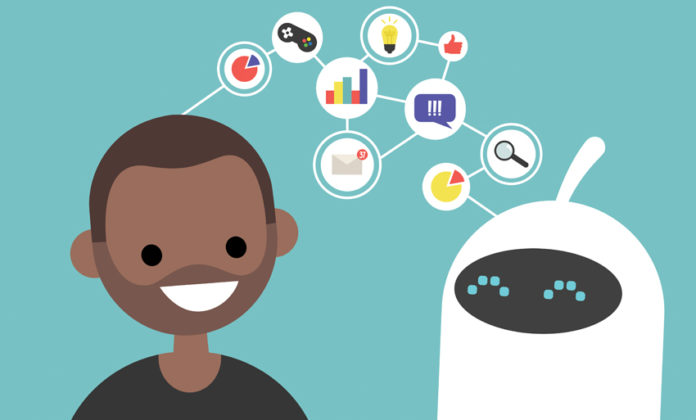To use a bot in your business or not, that is the question.
Recently, businesses have been working on improving their artificial intelligence engines, which have drastically simplified and improved the day-to-day operations of customer service agents. This idea of being replaceable by machines was recently (and expertly) addressed in an iconic Pixar-like ad for University of Phoenix.
Although some people have been reluctant to get onboard with artificial intelligence (AI) (and the bots fueled by it), AI engines have been able to bring forth a multitude of new opportunities to improve efficiency for businesses and customer service.
In a study conducted by Aspect Software Research, 44% of companies surveyed said that they’d prefer to use bots with their CRM tools. When implemented correctly, leveraging bots within customer service practices can effectively provide a thorough self-service option for consumers.
As promising as bots may sound in theory, there’s still a long way to go before they could truly pass for a human agent. Chatbots are designed to help improve customer service (and business in general) but going fully automated is complicated because they still need human assistance when answering context based questions.
That being said, when should humans be used instead of chatbots in customer service? Let’s take a look at how both bots and humans impact the customer experience.
Human Agents versus Chatbots
Using human agents and chatbots in customer service each come with their own set of pros and cons. However, businesses tend to experience the best outcomes when human agents are combined with AI engines; the two paired together provides customers with a highquality customer experience.
Bots are Great for Self-Service
A study conducted by entrepreneur Steven Van Belleghem reported that 70% of consumers expect self-service options on company websites for handling questions and customer service issues. Bots are able to quickly direct customers to the best technical resources available online.
Bots can also be used to gather basic contact or account information, which can be transferred to agents for follow up.
Complicated Inquiries
Despite the recent advancements in artificial intelligence, having customer facing bots could have a negative impact on the customer experience. Customers who are looking to make a transaction online want the individualized attention they would receive if they were speaking to a CSR face-to-face. At this point in time, complicated cases that require more thorough explanation, understanding, and security which is something bots cannot offer.
Responsive Service
Many companies take to social media platforms when dealing with inquiries, complaints, and customer service. The use of these platforms allow customers to get in touch with customer service agents regarding questions that don’t demand an immediate response.
Bots can send an automatic reply letting the customer know their message has been received and they will receive an answer shortly. These AI engines can then go a step further and assist the agents in answering these questions. In this situation, bots act as middlemen and CSRs are still responsible for communicating directly with the customer.
Chatbots versus Live Chat
Chatbots add a lot of useful functionality to the field of customer service:
-
- 24/7 operation
-
- Able to engage in multiple conversations at once
-
- Offer a consistent tone across customers
- Provide customers with the same quality answers each time
However, not all inquiries can be answered by bots on their own. For example, think of a situation where you needed to call a company’s customer service hotline and an automated agent gets on the line and rattles off a list of potential problems you could be encountering.If your problem wasn’t listed, you would be connected to a live agent. In this situation, the information needed to solve your problem wasn’t stored in the bot’s database.
How Chatbots Affects Customer Satisfaction
Utilizing chatbots or human agents in the wrong situations can cause a decrease in customer satisfaction and can negatively impact the overall customer experience.
Delivery services, travel companies, and online shops could potentially design a chatbot to accommodate their customers and improve service. However, not all business are able to successfully implement chatbots within their business structure.
For example, companies that rely on human to human interactions (like consultative services) would be faced with more issues than benefits while attempting to implement AI engines into their current structure. After all, bots are machines who store data and information, therefore their conversations can’t be easily improvised.
On the other hand, if you assign a human agent tasks only involving repetitive inquiries and basic problem solving, it can affect the customer service workforce and waste resources. Questions, complaints, and other inquiries that can be easily answered by chatbots should be handled by these engines. This allows agents to focus their attention on more complex situations and high priority cases.
When Should Humans Be Used Over Bots in Customer Service?
When used together, humans and bots are a winning combination for providing excellent customer service. Determining which tasks are allocated where is a critical part of the partnership between the two.
Can your company benefit from adding bots to your customer service strategy? Get in touch for a free demo of Glia’s suite of customer experience solutions.





